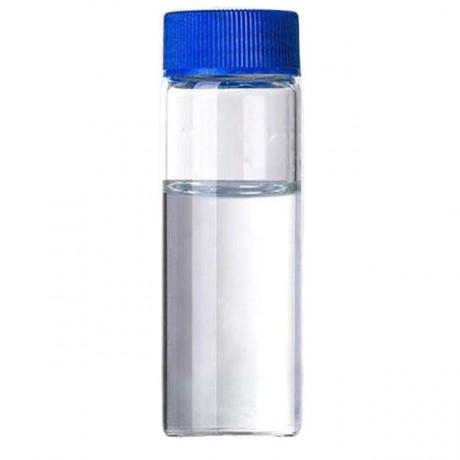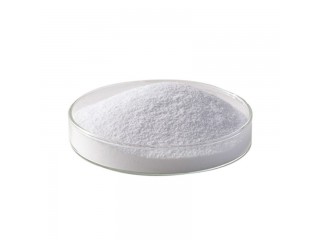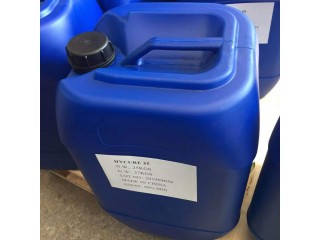Chemical colorant 99% colorless liquid cas 109-16-0 Triethylene glycol dimethacrylate TEGDMA with competitive price
Sep 22nd, 2022 at 15:02 Agrochemicals Lawrence 90 views Reference: xYRdGvw3bDzLocation: Lawrence
Price: Contact us
Chemical Colorant 99% Colorless Liquid Cas 109-16-0 Triethylene Glycol Dimethacrylate Tegdma With Competitive Price - Buy Triethylene Glycol Dimethacrylate Tegdma,Cas 109-16-0,Chemical Colorant 99% Colorless Liquid Cas 109-16-0 Triethylene Glycol Dimethacrylate Tegdma With Competitive Price Product from China, Please contact us by Live Chat on the bottom right.
Essential details
| CAS No.: |
109-16-0 |
| Other Names: |
TEGDMA |
| MF: |
C14H22O6 |
| EINECS No.: |
203-652-6 |
| Place of Origin: |
Jiangsu, China |
| Type: |
Flavor & Fragrance Intermediates, Syntheses Material Intermediates |
| Purity: |
99% |
| Model Number: |
JY257 |
| Application: |
UV monomer |
| Appearance: |
colorless liquid |
| Product name: |
TEGDMA/Triethylene glycol dimethacrylate |
| Melting point: |
-52°C |
| Boiling point: |
170-172 °C5 mm Hg(lit.) |
| Density: |
1.092 g/mL at 25 °C(lit.) |
| Refractive index: |
n20/D 1.461(lit.) |
| Flash point: |
>230 °F |
| Sample: |
available |
| Shelf life: |
24 Months |
| MOQ: |
1kg |
| Package: |
200kg/drum |
Supply Ability
| Supply Ability | 10000 Kilogram/Kilograms per Week |
Packaging & delivery
200kg/drum pallets will be available if necessaryshanghai port
| Packaging Details | |||||||
| Port | |||||||
| Picture Example: | |||||||
| Lead time: |
|
|
Product name |
Triethylene glycol dimethacrylate/TEGDMA |
|
Cas no. |
109-16-0 |
|
Density |
1.092 g/mL at 25 °C(lit.) |
|
Melting point |
-52°C |
|
Boiling point |
170-172 °C5 mm Hg(lit.) |
Application:
Triethylene glycol dimethacrylate is used as a cross-linking agent in the synthesis of poly (methacrylic acid-g-ethylene glycol) hydrogels which shows large changes in swelling due to changes in pH, temperature and solvent composition. They are also used as divinylic methacrylic monomers which are widely used to form copolymers with divinylbenzene (DVB) and glycidyl methacrylate (GMA) or hydroxyethyl methacrylate (HEMA) comonomers. As a monomer, it is typically used in dental resin materials that can cause specific stress responses in eukaryotic cells. It commonly used to aesthetically restore the structure and function of teeth impaired by caries, erosion, or fracture. It is cytotoxic via apoptosis, induce genotoxic effects, and delay the cell cycle. It also influences the response of cells of the innate immune system, inhibit specific odontoblast cell functions, or delay the odontogenic differentiation and mineralization processes in pulp-derived cells including stem cells. It is also used as a diluent co-monomer in dimethacrylate based dental composites as well as being used as a branching agent in the atom transfer radical polymerization (ATRP) of styrene.
Triethylene glycol dimethacrylate (TEGDMA) is a resin monomer widely used in the composition of dentin bonding agents and composite resins to restore teeth structures impaired by caries and/or fractures. However, resin monomers can be released into the oral environment and can trigger hazardous biological effects on oral tissues. The release of the resin monomers due to degradation and incomplete polymerization can occur hours or days after the treatment. Due to its hydrophilic nature, hydrolysis plays an important role in the degradation processe of TEGDMA. Chemical interactions with oral fluids and mechanical influences may also cause the degradation of resin monomers. Direct contact or diffusion of resin monomers through the dentinal tubules creates ways of interaction between dental pulp tissue and resin monomers. Dentin thickness and the severity of caries lesions are important factors in determining the amount of resin monomers interacting with dental pulp tissue. TEGDMA has been reported to cause cytotoxicity, impaired cellular functions, pulpal inflammatory responses, and changes in the immune system. In addition, TEGDMA may reduce the mineralization capacity of dental pulp cells by decreasing the expression of the mineralization related genes pathways and causing adverse effects.
Q: When will my goods be shipped? A:About 3-5 days after prepayment is done.
Q: Can I get a sample? A: Free samples are available, but buyers needs to pay freight. Q: How long does it take for me to get a sample? A: It depends. Generally speaking, it is about 7-10 days. Q: why is the quote offered different from the sticker price? A: As we know, prices of chemicals are not fixed, they fluctuate with the markets. Q: Is the quality of your products guaranteed? A: We have a professional R&D team, so every batch of our products is up to standard.
1. With a seasoned R&D team, we are experienced in producing multiple chemicals over the past ten years. 2. Tailor-made packing can also be available according to your specific requirment. 3. Fast response. Every inquiry will be answered within 24 hours 4. Prompt delivery. We have worked with many forwarding companies for years. 5. Good quality, we have a strict quality control system.




![2-Bromodibenzo[b,d]furan manufacturer CAS:86-76-0](https://dearchem.com/storage/files/us/thumb-320x240-1708.jpg)





